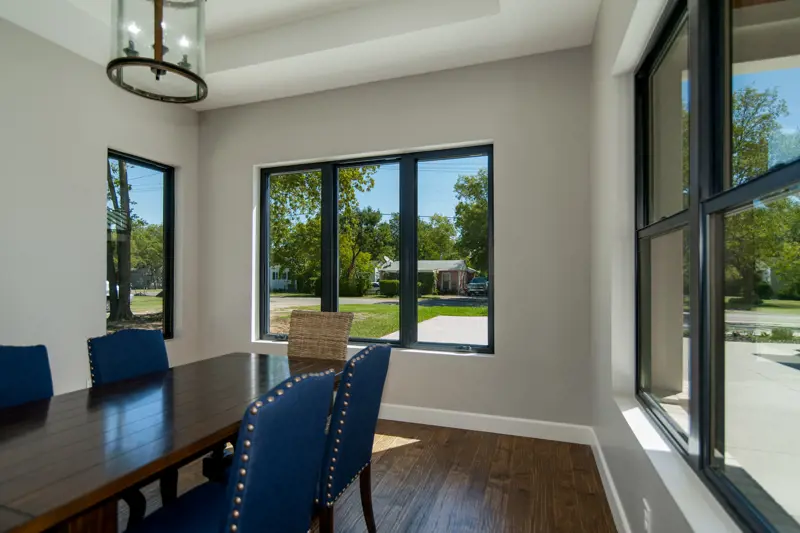
Popular Upgrades For Replacement Windows
Shopping for new windows is a fun and exciting process. There are also many decisions to make so working with the right window retailer or contractor is important. Professionals can give you some guidance so that you get a product your happy with for years, even decades to come.
Some of the choices you’ll have to make have to do with smaller details of the window, many of these details are considered upgrades. In this article, I’ll tell you about a few features that are commonly upgraded by window shoppers.
With regard to pricing, it’s helpful to know that most window retailers like ours, sell windows and installation. But when we say “window” we mean a full window frame unit with glass. There are many elements that homeowners want on their new windows that are upgrades but often become confused for standard parts of the window.
This can come as a surprise to first-time window shoppers and it can be frustrating if you’re not expecting to spend additional money for these upgrades. Upgrades will vary by retailer but in the content below, you’ll learn about three common window features that are often considered upgrades. This is a good opportunity to learn about ways you can customize your window and also familiarize with parts of a window.
Grids
Grids, also known as grilles or muntins, are a very common window upgrade. It’s very possible that if you take a walk around your community you’ll see that the windows on the front of your neighbors’ homes have grids.
The glass on windows used to be held together by muntins. The muntin would separate and hold together individual panes of glass within the window sash. Muntins were needed because glass could only be made in small panes but today glass panes can be made in large sizes so grids (muntins) are just decorative accessories.
Depending on the manufacturer grids can be made in many traditional patterns and some offer custom designs. What you’ll find across most manufacturers are two common placements for the grids. These include SDL grids and Internal grids. There are additional options for grid configurations but these two, as well as going without, are the most common.
SDL Grids
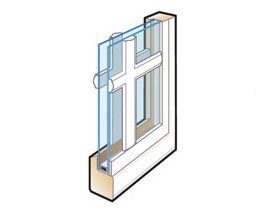
SDL grids create the mimic the look of muntins by placing grids on the exterior of each side of the glass. This will look like an exposed 3D (or contoured) grid on the external side of the window and an exposed 3D grid on the interior side of the window. Both parts work together to mimic the look of a muntin by carrying the illusion through both sides of the window.
Internal Grids

Internal grids can be flat or have beveled edges to create a more 3D look, this option will vary by manufacturer. This option is a good one for homeowners who want grids but want an easy to clean window surface. By keeping the grids between the glass, wiping down the glass will be easier than cleaning around the grooves of SDL grids.
Grid Patterns


Examples of grid patterns from Andersen Windows and Doors
Glass options
Energy Efficient Glass
Your glass options have a couple of considerations. The first and primary concern has to do with energy efficiency. Most window retailers will sell you a window unit with high-performance double pane or triple pane glass. This is typically an Insulated Glass Unit (IGU) that will provide additional insulation to your window unit.
Tip: If you live in Texas like us, you don’t need triple pane glass. While the upgrade may be an option, you won’t really reap any major benefits by choosing triple pane over double pane. Triple pane glass units are most effective in climates with extreme winter weather.
Tinted Glass
Tinted glass is a good way of protecting the interior of your home from the harmful rays of the sun. If you’re like me and like to have the blinds open and the sun shining in, you’ll want to do what you can to protect your furniture and floors from prolonged sun exposure. Tinted glass adds a layer of protection against the sun.

Example of tinted glass from Milgard Windows and Doors
Decorative Glass
If you want something that will draw some attention you can opt for some beveled glass or art glass. Beveled glass and art glass are fun elements to add on front entry doors, in hallways or staircases.
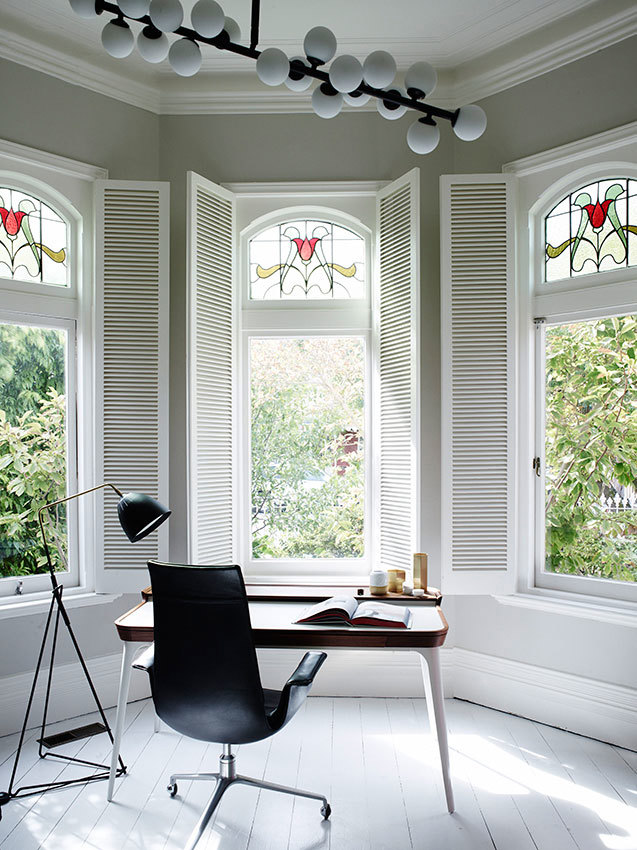
Obscure Glass
Obscure glass is a good option if you need windows with a little privacy. Unlike regular transparent glass, obscure glass is roughened or texturized on one side so that you can’t see all the way through. This is a translucent glass and not transparent glass. You might find a use for this glass in bathrooms and entry doors. Obscure glass is also referred to as frosted glass, opaque glass, and milk glass.

Obscure glass textures by Milgard Windows and Doors
Trim
You’ll want to consider your trim options for the interior and exterior of your house. You don’t need to put trim on your window, in fact, many homes don’t have trim around the windows. If you do decide to put trim on your windows it may be helpful to know that trim used on the interior side of the window is often known as casing. Trim on the exterior side of the window is called brick mold.
Aesthetically, the interior and exterior trim can look different but for the most part, the basic parts are similar. In the image below you can see how trim is placed around the window on the interior side of the structure. The trim is made of the apron, stool, and casing. The apron is at the bottom and sitting above it is the stool. Surrounding the sides and top of the window is the casing.
On the exterior side of the window, you’ll similar elements. Instead of a stool, you’ll find a sill which sits above the apron but at an incline so that water can escape instead of pooling at the window. Above the casing, you’ll also find a drip cap or back band that keep water away from the building.
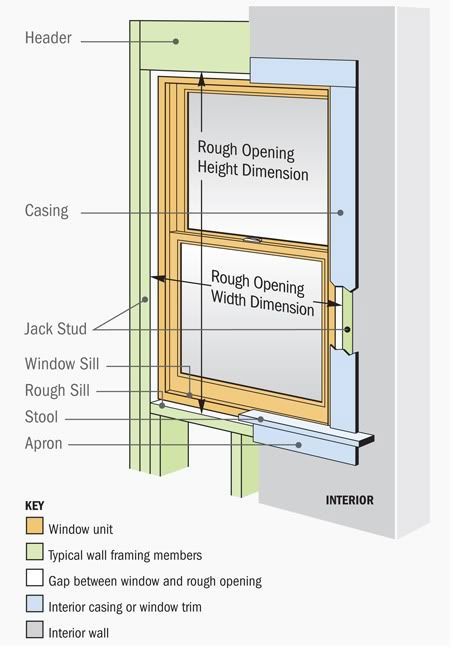
Trim can be as decorative or as simple as you’d like. As I mentioned above you can also go without depending on the material of your home’s exterior. The author’s of Get Your House Right: Architectural Elements to Use & Avoid, recommend always using casing, drip caps, and sills around windows set in siding to protect the cut ends of the facade.
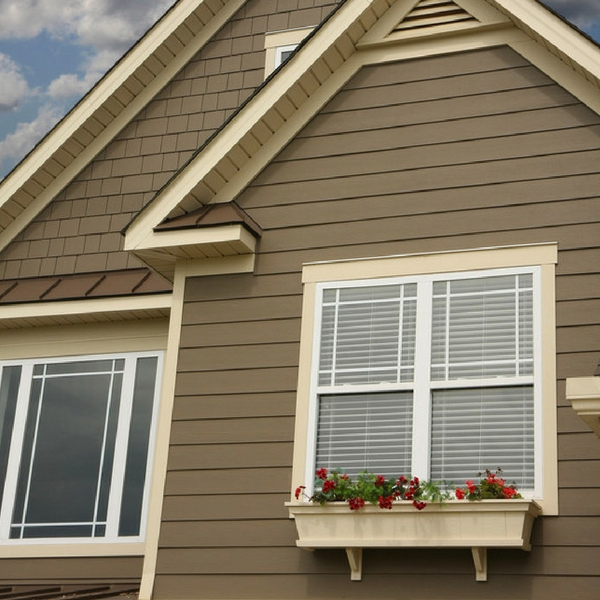
There’s still more!
When it comes to your windows there many ways you can customize them to meet your needs. Knowing what costs are included and which are considered upgrades can help you as you weigh your choices between different bids.
In addition to the choices, I mentioned above other upgrades include insulating gas like argon or krypton in glass packages, laminated glass, tempered glass, foam filled frames, extended warranties, even premium paint or stain finishes.
I always recommend having an idea of what you want no matter how grand or how simple and discussing your vision with a trusted retailer. An honest retailer should be able to make product recommendations prioritizing your needs whether that be a certain window frame color, material, or glass package.
Oops!
We don't currently serve your area but do want to help you plan your project. Try our Build & Price tool to get an idea of window & door costs within DFW. Your area may be higher or lower but at least you'll have some idea of the price.
Thanks for stopping by.






